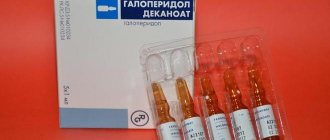Pregabalin
Patients with diabetes mellitus
In some patients with diabetes mellitus, in case of weight gain during treatment with pregabalin, dose adjustment of hypoglycemic agents may be required.
Hypersensitivity reactions
Pregabalin should be discontinued if symptoms of angioedema (such as facial swelling, perioral edema or upper respiratory tract swelling) develop.
Suicidal thoughts and behavior
Antiepileptic drugs, including pregabalin, may increase the risk of suicidal thoughts or behavior. Therefore, patients receiving these drugs should be closely monitored for new or worsening depression or suicidal thoughts or behavior.
Decreased gastrointestinal function
When using pregabalin and opioids concomitantly, consider the need for preventive measures to prevent the development of constipation (especially in older women)
Dizziness, drowsiness, loss of consciousness, confusion and cognitive impairment
Pregabalin treatment has been associated with dizziness and drowsiness, which increase the risk of accidental injury (falls) in older adults. During post-marketing use of the drug, cases of loss of consciousness, confusion and cognitive impairment have also been reported. Therefore, until patients appreciate the possible effects of the drug, they should exercise caution.
Discontinuation of concomitant anticonvulsant therapy
Information on the possibility of discontinuing other anticonvulsants when seizures are suppressed with pregabalin and the advisability of monotherapy with this drug is insufficient. There are reports of the development of seizures, including status epilepticus and petit mal seizures, during the use of pregabalin or immediately after the end of therapy.
Effect of pregabalin on vision
In clinical studies, patients receiving chronic pregabalin experienced more frequent side effects such as blurred vision than patients receiving placebo. However, this side effect ceased as treatment continued.
In clinical studies in which patients were examined ophthalmologically, decreased visual acuity and changes in visual fields were observed more often in patients receiving pregabalin than in patients receiving placebo. The incidence of fundus changes was higher in patients receiving placebo.
Although the clinical significance of these abnormalities has not been established, patients should report changes in vision during pregabalin therapy to their physician. If symptoms of visual impairment persist, monitoring should be continued. More frequent vision screenings should be performed in patients who are already seen regularly by an ophthalmologist. If adverse reactions such as loss of vision, blurred vision or other visual disturbances occur in response to the use of pregabalin, discontinuation of the drug may lead to the disappearance of these symptoms.
Kidney failure
There have also been cases of renal failure; in some cases, renal function was restored after discontinuation of pregabalin.
Pregabalin withdrawal symptoms
The following adverse events have been observed following discontinuation of pregabalin after long-term or short-term therapy: insomnia, headache, nausea, diarrhea, flu-like syndrome, depression, sweating, dizziness, convulsions and anxiety. Available evidence suggests that the incidence and severity of withdrawal symptoms may depend on the dose of pregabalin.
Pregabalin abuse
There is no evidence that pregabalin is active at receptors associated with drug abuse in patients. During post-marketing studies, cases of abuse of pregabalin have been reported. As with any drug that affects the central nervous system, the patient's medical history should be carefully assessed for any history of drug abuse and the patient should be monitored for potential dosage irregularities or abuse of pregabalin (eg, development of resistance to pregabalin therapy, unreasonable increase in the dose of the drug, additive behavior of the patient).
Congestive heart failure
Although there has been no apparent association between pregabalin use and the development of heart failure, chronic heart failure has been reported in some patients during post-marketing use of the drug during pregabalin therapy. In patients without clinically significant signs of heart or vascular disease, there was no association between peripheral edema and cardiovascular complications, such as increased blood pressure or chronic heart failure. These reactions were predominantly observed in elderly patients who suffered from impaired cardiac function and received the drug for neuropathy. Therefore, pregabalin should be used with caution in this category of patients. After discontinuation of pregabalin, the manifestations of such reactions may disappear.
Treatment of central neuropathic pain associated with spinal cord injury
The incidence of adverse events from the central nervous system, especially somnolence, increases during the treatment of central neuropathic pain due to spinal cord damage, which, however, may be a consequence of the additive effects of pregabalin and other concomitantly taken drugs (for example, antispasticity). This circumstance should be taken into account when prescribing pregabalin for this indication.
Encephalopathy
Cases of encephalopathy have been reported, especially in patients with concomitant diseases that may lead to the development of this condition.
Release form and composition
Dosage form of the drug - capsules: gelatin, hard, filled with powder or compacted powder mass from almost white to white:
- dosage 25 mg – capsules No. 4, body white or almost white with a yellowish tint, cap color from green to dark green;
- dosage 75 mg – capsules No. 4, body white or almost white with a yellowish tint, cap color blue; the body is white, the color of the cap is from red-brown to dark red-brown;
- dosage 100 mg – capsules No. 4, body and cap white or almost white with a yellowish tint;
- dosage 150 mg – capsules No. 2, body and cap white or almost white with a yellowish tint;
- dosage 300 mg – capsules No. 0, body and cap white or almost white with a yellowish tint; the body is white, the color of the cap is from red-brown to dark red-brown.
Capsules (1)
Composition of Pregabalin:
- active substance: pregabalin – 25, 75, 100, 150 or 300 mg;
- auxiliary components: colloidal silicon dioxide, calcium carbonate, magnesium stearate, sodium lauryl sulfate, potato starch, talc;
- capsule cap: titanium dioxide, gelatin, for a dosage of 25 mg - indigo carmine and iron dye yellow oxide, for a dosage of 75 mg - indigo carmine;
- capsule body: gelatin, titanium dioxide.
Packing: 10 pcs. in cellular contour packs, 30 or 60 pcs. in polyethylene jars or glass bottles; in a cardboard pack 1 bottle/jar or 1–6 packages of cellular contour.
Capsules (2)
Composition of Pregabalin:
- active substance: pregabalin – 75, 150 or 300 mg;
- auxiliary components: corn starch, lactose monohydrate, talc;
- capsule cap: gelatin; for dosages of 75 mg and 300 mg – iron dye red dioxide E172; for a dosage of 150 mg – titanium dioxide;
- capsule body: gelatin, titanium dioxide.
Packaging: 14 pcs. in cellular contour packages made of polyvinyl chloride film and aluminum foil; in a cardboard pack there are 1, 2 or 4 contour cell packages.
Drug interactions
The pharmacokinetic interaction of Pregabalin with other drugs/substances is unlikely, since it is mainly excreted unchanged by the kidneys, undergoes minimal metabolism (less than 2% of the dose is excreted by the kidneys in the form of metabolites), does not inhibit the in vitro metabolism of other drugs, and does not bind to plasma proteins .
Established interaction:
- carbamazepine, phenytoin, valproic acid, gabapentin, lamotrigine, lorazepam, oxycodone, ethanol: there are no signs of clinically significant pharmacokinetic interaction with Pregabalin;
- oral hypoglycemic agents, insulin, diuretics, phenobarbital, tiagabine, topiramate: do not have a clinically significant effect on the clearance of Pregabalin;
- oral contraceptives (norethisterone/ethinyl estradiol): the equilibrium pharmacokinetics of both drugs does not change;
- other drugs that depress the central nervous system: possible respiratory distress, up to the onset of coma;
- oxycodone, lorazepam or ethanol (with repeated use): no clinically significant effect on breathing; It is possible that Pregabalin enhances the cognitive and motor impairment caused by oxycodone and worsens the effects of ethanol and lorazepam.
Non-prescription painkillers
The closest analogues of Pregabalin are narcotic analgesics, the free sale of which in pharmacies is strictly prohibited. Non-steroidal anti-inflammatory drugs can relieve acute pain. These over-the-counter substitutes are available as parenteral products, tablets, and ointments. But in terms of the power of analgesic action, only injection solutions with the following active ingredients are similar to Pregabalin:
- nimesulide;
- diclofenac;
- ketoprofen.
Over-the-counter substitutes for Pregabalin inhibit cyclooxygenase, an enzyme responsible for the synthesis of prostaglandins, bradykinins, and leukotrienes. They are the cause of all the discomfort with fibromyalgia. Nonsteroidal anti-inflammatory drugs eliminate not only muscle-bone pain, but also other characteristic symptoms of severe pathology. These are acute migraine-type headaches and restless legs syndrome.
Reviews of Pregabalin
Reviews about Pregabalin are mostly positive; at the beginning of therapy, the drug effectively eliminates the symptoms of the disease. But many patients note that with prolonged use, its effect gradually decreases. The main side effects accompanying therapy, drowsiness and lethargy, are transient in most patients. It is noted that in each case the drug acts individually, so all recommendations for its use should be given only by the attending physician.
Instructions for use of Pregabalin: method and dosage
Pregabalin capsules are taken orally, regardless of diet.
Recommended dosage: 150–600 mg per day, divided into 2–3 doses.
Therapy according to indications:
- neuropathic pain: initial daily dose – 150 mg; after 3–7 days, depending on the tolerability of the drug and the result achieved, the daily dose can be increased to 300 mg, and after another 7 days, if necessary, to the maximum daily dose of 600 mg;
- epilepsy: initial daily dose – 150 mg; after 7 days, depending on the tolerability of the drug and the result achieved, the daily dose can be increased to 300 mg, and after another 7 days, if necessary, to the maximum daily dose of 600 mg;
- fibromyalgia: initial daily dose – 150 mg, taken 2 times a day, 75 mg; depending on the tolerability of the drug and the result achieved, the daily dose can be increased to 300 mg, taken 2 times a day, 150 mg; in the absence of a positive result, the daily dose is increased to 450 mg, taken 2 times a day, 225 mg, and after another 7 days, if necessary, to the maximum daily dose of 600 mg; a daily dose of 600 mg does not provide additional benefits, but is less tolerated by patients;
- generalized anxiety disorder: initial daily dose – 150 mg; after 7 days, depending on the tolerability of the drug and the result achieved, the daily dose can be increased to 300 mg, after another 7 days, if necessary, increased to 450 mg, and in the absence of a positive therapeutic effect, after 7 days, to the maximum daily dose – 600 mg.
During treatment, it is necessary to regularly evaluate the advisability of its continuation. If discontinuation of Pregabalin therapy is necessary, it is recommended that this be done gradually over a period of at least 7 days.
In case of impaired renal function, the dose of Pregabalin is selected individually, taking into account CC (creatinine clearance), calculated using a special formula: CC (ml/min) = [(140 - age in years) × body weight in kg]/ 72 × serum creatinine ( mg/dL) (for women × 0.85).
Selection of the dose of pregabalin (mg/day) depending on the degree of renal failure:
- CC ≥60: starting dose – 150; maximum dose – 600; frequency of administration – 2–3 times;
- CC ≥30, but <60: starting dose – 75; maximum dose – 300; frequency of administration – 2–3 times;
- CC ≥15, but <30: starting dose – 25–50; maximum dose – 150; frequency of administration – 1–2 times;
- QC <15: starting dose – 25; maximum dose – 75; frequency of administration – 1 time;
- additional dose after dialysis: starting dose – 25; maximum dose – 100; Frequency of administration: once.
If you miss the next dose, you should take it as soon as possible, but not if it is already time for the next dose.
Side effects
The most common negative side effects from taking Pregabalin are dizziness and drowsiness, which usually occur in mild to moderate degrees. Discontinuation of therapy, depending on the subjective tolerability of these effects, was required in 4% of patients for dizziness and in 3% for drowsiness. Other side effects requiring discontinuation of the drug are confusion, ataxia, asthenia, peripheral edema, blurred vision, impaired attention and coordination.
Frequency of occurrence of adverse reactions by systemic organ classes, determined by the number of adverse reactions in the array of clinical observation data, regardless of the assessment of the cause-and-effect relationship (scale used: very often - >0.1; often - ≥0.01, but <0. 1; uncommon – ≥0.001, but <0.01; rare – <0.001):
- infections and infestations: often – nasopharyngitis;
- blood and lymphatic system: uncommon – neutropenia;
- metabolic processes and nutrition: often – increased appetite; uncommon – hypoglycemia, anorexia;
- mental disorders: often - confusion, euphoria, irritability, insomnia, depression, decreased libido, apathy, disorientation, panic attack; uncommon – anxiety, hallucinations, anxious arousal, aggressiveness, depressed/elevated mood, mood swings, anxious dreams, depersonalization, difficulty finding words, anorgasmia, increased libido, increased insomnia; rarely – disinhibition;
- neurological disorders: very often - drowsiness, dizziness, headache; often - memory impairment, amnesia, impaired coordination, ataxia, dysarthria, tremor, impaired attention, hypoesthesia, paresthesia, imbalance, sedation, lethargy, ageusia; uncommon – fainting, psychomotor agitation, myoclonus, dyskinesia, intention tremor, orthostatic dizziness, speech impairment, nystagmus, decreased reflexes, burning sensation on the mucous membranes and skin, hyperesthesia, cognitive impairment, loss of consciousness; rarely - pathological numbness, dysgraphia, hypokinesia, convulsions, parosmia;
- organ of vision: often – diplopia, blurred vision; uncommon – visual impairment, visual field defect, loss of peripheral vision, eye swelling, eye pain, asthenopia, photopsia, increased lacrimation, dry eye syndrome, irritation of the mucous membrane of the eyes; rarely - vibration of visible objects (oscillopsia), changes in the depth of visual perception, keratitis, strabismus, mydriasis, increased brightness of visual perception, loss of vision;
- organ of hearing and vestibular apparatus: often – vertigo; infrequently – hyperacusis;
- cardiovascular system: uncommon – tachycardia, sinus bradycardia, 1st degree atrioventricular block, chronic heart failure; rarely – sinus arrhythmia, sinus tachycardia, prolongation of the QT interval;
- vascular disorders: infrequently - hypertension, hypotension, skin flushing, hot flashes, cold extremities;
- respiratory system: often - dry nasal mucosa; uncommon – nosebleeds, shortness of breath, cough, rhinitis, nasal congestion, snoring; rarely - a feeling of constriction in the throat, pulmonary edema;
- digestive system: often - vomiting, flatulence, constipation, bloating, nausea, dry mouth, diarrhea; uncommon – hypersecretion of the salivary glands, gastroesophageal reflux, decreased sensitivity of the oral mucosa; rarely - pancreatitis, ascites, swelling of the tongue, dysphagia;
- skin and subcutaneous tissues: uncommon – urticaria, papular rash, increased sweating, itching, facial swelling; rarely - Stevens-Johnson syndrome, cold sweat;
- musculoskeletal system: often - muscle spasm in the cervical spine, arthralgia, muscle cramps, back pain, pain in the extremities; uncommon – myalgia, joint swelling, muscle cramps, muscle stiffness, neck pain; rarely - rhabdomyolysis;
- urinary system: infrequently – dysuria, urinary incontinence; often – oliguria, renal failure, urinary retention;
- reproductive system: often – erectile dysfunction, pain in the mammary glands; uncommon – delayed ejaculation, sexual dysfunction, dysmenorrhea; rarely – amenorrhea, enlarged mammary glands, discharge from the mammary glands, gynecomastia;
- general disorders and disorders at the injection site: often - falls, gait disturbance, peripheral edema, feeling of intoxication, poor health, fatigue; uncommon – pain, generalized swelling, fever, chest tightness, thirst, general weakness, chills, malaise;
- data from laboratory and instrumental studies: often - increase in body weight, increase in creatinine concentration in the blood; infrequently - increased activity of liver enzymes - CP (creatine phosphokinase), ALT (alanine aminotransferase), ACE (aspartate aminotransferase); changes in blood parameters - increased glucose concentration, decreased platelet and potassium counts; weight loss; rarely – a decrease in the number of leukocytes in the blood;
- immune system: uncommon – hypersensitivity reactions; rarely – angioedema, allergic reactions.
Contraindications
Absolute:
- galactose intolerance, lactase deficiency, glucose/galactose malabsorption - for capsules (2), which contain lactose;
- children and adolescents up to 17 years of age;
- increased individual sensitivity to the active substance or other components of the drug.
Relative contraindications: Pregabalin is prescribed with caution in patients with impaired renal function, heart failure and in patients with a history of drug dependence.
Use during pregnancy and lactation
There are no adequate data on the use of Pregabalin in pregnant women. Animal studies have revealed a toxic effect of the drug on reproductive function. Therefore, during pregnancy, Pregabalin can be used only if the benefit to the mother is significantly higher than the possible risks to the fetus. During treatment, women of reproductive age should use reliable methods of contraception.
Since Pregabalin is excreted in breast milk and the safety of its use in newborns is unknown, breastfeeding is not recommended during drug therapy. Breastfeeding should be discontinued or pregabalin therapy should be discontinued.
Pharmacological properties
Pharmacodynamics
The active ingredient of the drug is pregabalin, an analogue of γ-aminobutyric acid [(S)-3-(aminomethyl)-5-methylhexanoic acid].
It has been proven that pregabalin, irreversibly replacing [3H]-gabapentin, binds to α2-delta protein, an additional subunit of voltage-gated calcium channels in the CNS (central nervous system). Perhaps this kind of binding contributes to the manifestation of the analgesic and anticonvulsant effects of the drug.
The mechanism of action of pregabalin when used according to indications:
- neuropathic pain: the effectiveness of therapy for patients with postherpetic neuralgia and diabetic neuropathy is noted; the effect of the drug and the risk of adverse reactions do not depend on the frequency of administration and duration of the course, for example, taking Pregabalin 2 times a day for up to 13 weeks and 3 times a day for up to 8 weeks are generally equally effective; during treatment, lasting 13 weeks, the pain decreased during the first week and this effect persisted until the end of the course; 35% receiving pregabalin and 18% receiving placebo experienced a 50% reduction in pain index;
- fibromyalgia: a marked reduction in pain symptoms associated with fibromyalgia is observed when using daily doses of pregabalin in the range of 300–600 mg; the clinical effectiveness of daily doses of 450 and 600 mg is comparable, but at a dose of 600 mg the drug is usually less well tolerated; the use of the drug also significantly improves the functional activity of patients and reduces the severity of sleep disorders, while at a daily dose of 600 mg the drug improves sleep more significantly compared to a dose of 300–450 mg;
- epilepsy: when treated with a course of 12 weeks, the effect of the drug and the risk of adverse reactions do not depend on the frequency of administration (2 or 3 times a day), the frequency of seizures begins to decrease from the first week of administration;
- generalized anxiety disorder: symptoms begin to decrease from the first week of therapy; Use of the drug for 8 weeks reduced symptoms on the Hamilton Anxiety Scale (HAM-A) by 50% in 52% of patients receiving pregabalin and in 38% of those receiving placebo.
Pharmacokinetics
The pharmacokinetic parameters of pregabalin in healthy volunteers, in patients with epilepsy receiving antiepileptic therapy, and in patients receiving it for the relief of chronic pain syndromes were similar at steady state.
Characteristics:
- absorption: on an empty stomach, pregabalin is absorbed quickly, Cmax (maximum plasma concentration) is reached after 1 hour, both with a single and repeated doses; the bioavailability of the substance when taken orally does not depend on the dose and is ≥ 90%; in case of repeated use, the level of equilibrium plasma concentration is reached after 24–48 hours. Taking capsules after meals reduces the Cmax value by 25–30%, and Tmax (time to reach maximum concentration) increases to 2.5 hours, while food intake does not have a clinically significant effect on the overall absorption of the substance;
- distribution: after oral administration of Pregabalin, its Vp (apparent volume of distribution) is approximately 0.56 l/kg, it does not bind to plasma proteins; animal studies have shown that in rats, mice and monkeys, pregabalin penetrates the blood-brain barrier, in addition, in experiments with rats, its penetration into the placenta and during lactation into breast milk was revealed;
- metabolism: pregabalin practically does not participate in metabolic processes, and up to 98% is determined unchanged in the urine. The main metabolite is an N-methylated derivative, found in urine in an amount of no more than 0.9% of the dose of the active substance; preclinical studies showed no evidence of racemization of the S-enantiomer of pregabalin into the R-enantiomer;
- excretion: the substance is mainly excreted unchanged by the kidneys, with an average half-life of ~6.3 hours; Plasma and renal clearance of pregabalin are directly proportional, therefore, in case of impaired renal function and when on hemodialysis, dose adjustment is required.
In the range of recommended daily doses, the pharmacokinetics of pregabalin shows a linear pattern, interindividual variability is insignificant, less than 20%. When using the drug repeatedly, its pharmacokinetic characteristics can be calculated based on data after taking a single dose, so there is no need for regular monitoring of the concentration of the substance.







